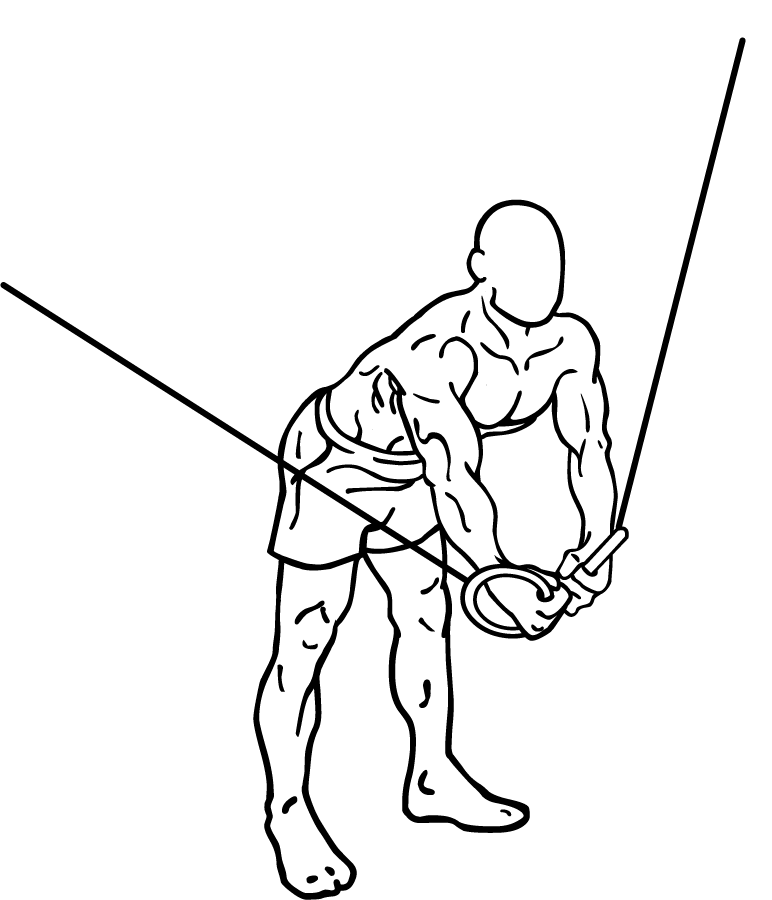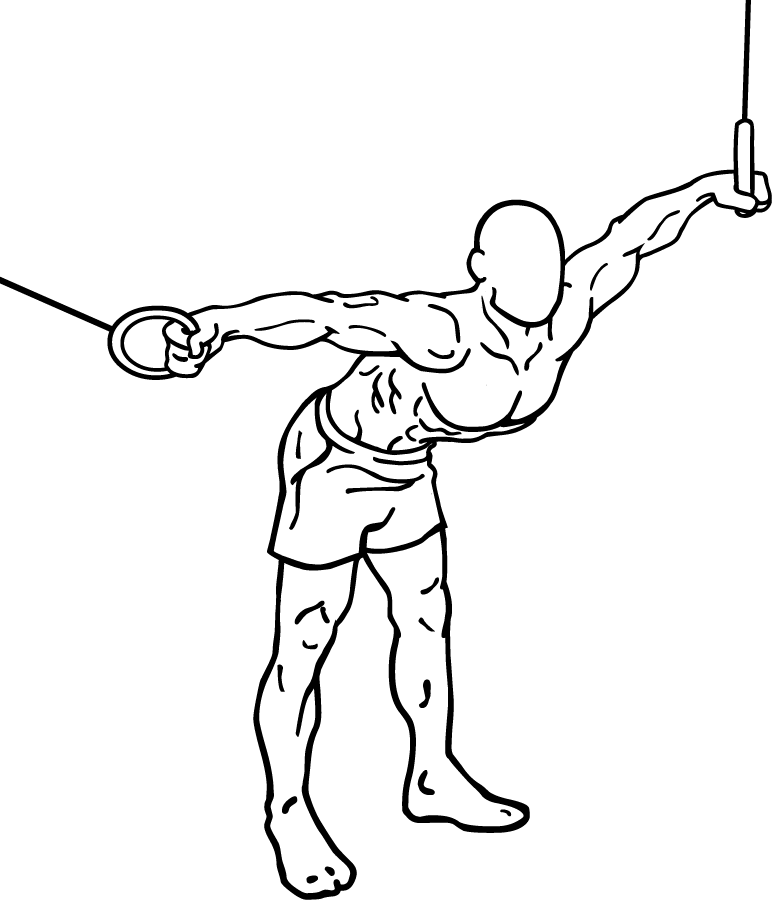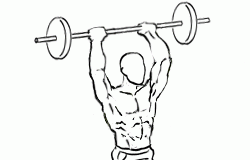Last Updated on September 25, 2014
When it comes to building a strong and defined upper body, the cable crossover is one of the most effective exercises. This movement targets your chest, shoulders, and upper body muscles in a unique way that dumbbells and barbells alone can’t achieve. It’s particularly useful for people looking to isolate their pectoral muscles while engaging the shoulders for overall upper body development and competing on stage in a physique and bodybuilding competition. In this article, we’ll break down the cable crossover exercise step by step, discuss its benefits, and explain how to incorporate it into your workout routine for optimal results.
What Is the Cable Crossover Exercise?
The cable crossover is a compound exercise that works multiple muscles in your upper body at the same time. Primarily, it targets the pectoralis major (chest muscles), but it also engages the deltoids (shoulder muscles) and the biceps as stabilizers. This exercise involves using a cable pulley machine, which allows for continuous tension throughout the entire range of motion, making it an ideal choice for building muscle definition and strength.
Why Choose Cable Crossovers?
The cable crossover offers several advantages over traditional chest exercises like bench presses or push-ups:
- Continuous Tension: Unlike free weights, cable machines maintain constant tension on the muscle throughout the movement. This ensures that your muscles are working at all times, which can lead to better gains in both size and strength.
- Customizable Angles: You can adjust the pulley height to target different parts of your chest. High, medium, and low pulley settings allow you to hit the upper, middle, and lower parts of the chest for well-rounded development.
- Improved Balance and Stability: The cable crossover requires you to stabilize your core and maintain balance, which can improve your overall functional strength and coordination.
- Range of Motion: The cable system provides a more extended range of motion than some other exercises, which can help with flexibility and muscle activation.
By incorporating cable crossovers into your routine, you’re ensuring that you’re hitting your chest muscles from a variety of angles and using multiple muscle fibers. This leads to increased muscle growth and greater overall strength.
Muscles Worked in the Cable Crossover
1. Pectoralis Major (Chest)
The primary muscle worked during the cable crossover is the pectoralis major, which is the large muscle that covers the majority of your chest. By bringing your arms together in front of your body, you’re actively engaging both the upper and lower portions of your chest.
2. Anterior Deltoids (Front Shoulders)
The front part of your shoulders, known as the anterior deltoids, is heavily involved in the movement as well. They help control the position of your arms as you bring the cables together, providing support and stability throughout the exercise.
3. Biceps and Triceps
While not the primary focus of the exercise, both the biceps and triceps play a role in controlling the movement of your arms. The biceps help with the contraction phase, while the triceps assist during the extension phase.
4. Core Muscles
Your core is also engaged during the cable crossover, as you need to maintain a stable posture throughout the exercise. This involves activating your abdominal muscles and lower back to keep your body balanced.
Benefits of Cable Crossover
Now that you understand which muscles are worked, let’s dive deeper into the benefits of incorporating the cable crossover into your workout routine:
- Increased Chest Definition: Cable crossovers allow you to isolate your chest muscles and work them through a full range of motion. This can lead to greater muscle definition and a more sculpted appearance, especially when combined with other chest exercises.
- Balanced Development: By adjusting the height of the pulleys, you can target different parts of your chest, ensuring that you develop your muscles evenly. This is crucial for preventing muscle imbalances, which can lead to injury.
- Improved Posture: Strengthening your chest and shoulders can help improve your posture by pulling your shoulders back and opening up your chest. This is especially important for people who spend long hours sitting at a desk or hunching over a computer.
- Joint Health: The controlled nature of the cable crossover can be gentler on your joints compared to heavy bench presses or free weights. This makes it an excellent option for individuals recovering from injury or those who want to minimize the risk of joint strain.
- Versatility: Whether you’re a beginner or an advanced lifter, the cable crossover can be adapted to suit your fitness level. You can start with lighter weights and gradually increase the resistance as you become stronger.
How to Perform the Cable Crossover: Step-by-Step Guide
If you’re new to the cable crossover or want to refine your technique, follow these simple steps to ensure you’re doing the exercise correctly.
Step 1: Set Up the Machine
- Begin by adjusting the cable pulleys to shoulder height. You can experiment with different heights to target different areas of your chest, but starting at shoulder height is a good default position.
- Attach the handles to the pulleys on each side of the machine.
- Stand in the center of the machine, facing outward, with a handle in each hand.
Step 2: Position Your Body
- Stand with one foot slightly in front of the other in a staggered stance. This will give you better stability during the exercise.
- Your arms should be extended out to the sides, with a slight bend in your elbows.
- Engage your core muscles to maintain a strong and stable posture throughout the movement.
Step 3: Perform the Movement
- Begin the exercise by slowly bringing the handles together in front of your chest in a controlled, sweeping motion. Your hands should meet just in front of your chest, with your palms facing each other.
- As you bring the cables together, think about “squeezing” your chest muscles to maximize muscle activation.
- Hold this contracted position for a brief moment (1-2 seconds) to increase muscle tension.
Step 4: Return to Starting Position
- Slowly reverse the movement by allowing your arms to return to the starting position. Make sure to keep the motion controlled and resist the urge to let the cables pull your arms back too quickly.
- Your arms should never go past your shoulders during this part of the exercise, as this can put unnecessary strain on your joints.
Step 5: Repeat for Desired Repetitions
- Perform 10-15 repetitions for 3-4 sets, depending on your fitness goals. Focus on maintaining proper form throughout each rep to avoid injury and maximize your gains.
Common Mistakes to Avoid
Like any exercise, there are common mistakes that people tend to make when performing the cable crossover. Here are a few tips to ensure you get the most out of this exercise without risking injury:
- Overextending the Arms: Don’t let your arms go too far behind your body when returning to the starting position. This can strain your shoulders and reduce the effectiveness of the exercise.
- Using Too Much Weight: Avoid the temptation to go too heavy. The key to the cable crossover is controlled movement, and using too much weight can compromise your form.
- Rushing the Movement: Take your time during both the concentric (bringing the cables together) and eccentric (returning to the starting position) phases of the exercise. Slow and controlled movements will lead to better muscle activation and prevent injury.
- Neglecting Core Engagement: Your core plays a vital role in stabilizing your body during the cable crossover. Failing to engage your core can lead to poor posture and reduced effectiveness of the exercise.
Variations of the Cable Crossover
Once you’ve mastered the basic cable crossover, you can try these variations to add some diversity to your routine:
1. Low to High Cable Crossover
- Set the pulleys to a low position, around knee height. Perform the exercise by bringing the cables up and together in front of your chest. This variation targets the upper chest more effectively.
2. High to Low Cable Crossover
- Set the pulleys to a high position, above shoulder height. Perform the movement by bringing the cables down and together. This version is great for targeting the lower chest and can add more definition to the lower portion of your pecs.
3. Single Arm Cable Crossover
- Perform the exercise with one arm at a time. This allows for greater focus on each side of the chest and can help correct muscle imbalances.
4. Cable Flyes
- Similar to the cable crossover, but instead of bringing your arms together in front of your body, you perform a wide arc to target the outer parts of your chest. This variation can add variety and target different muscle fibers in your pecs.
How to Incorporate Cable Crossovers Into Your Workout Routine
The cable crossover is a versatile exercise that can be included in your workout routine in a variety of ways. Here are a few examples:
As a Finisher
- Use the cable crossover as a finishing move at the end of your chest workout. After heavy compound exercises like the bench press or dumbbell presses, performing high-repetition cable crossovers can give your chest muscles a final burn and help build endurance.
As Part of a Superset
- Combine the cable crossover with another exercise in a superset for a time-efficient workout. For example, you could pair it with push-ups or dumbbell-flies for a great chest-pumping superset. The combination of exercises will increase muscle fatigue and boost hypertrophy, which is excellent for muscle growth.
As a Main Exercise
- If you’re looking to focus on your chest and shoulders, the cable crossover can serve as one of your main exercises in your workout. Start with it early in your routine to ensure you’re fresh and can give maximum effort. Pair it with compound movements like push-ups or dips for a balanced upper-body workout.
As Part of a Circuit
- If you enjoy circuit training, the cable crossover can be an excellent addition to your circuit. Include it alongside other exercises like squats, lunges, and shoulder presses to create a full-body workout that also targets your chest and shoulders.
Cable Crossover Workout Routine Example
Here’s an example of how to incorporate cable crossovers into a well-rounded chest workout:
- Barbell Bench Press: 4 sets of 8-10 reps
- Incline Dumbbell Press: 3 sets of 8-12 reps
- Cable Crossover: 4 sets of 10-15 reps
- Dumbbell Flyes: 3 sets of 12-15 reps
- Push-Ups (as a finisher): 3 sets to failure
By adding the cable crossover in the middle of this routine, you can ensure your chest muscles are fatigued by the end of your workout, helping to promote growth and definition.
Safety Tips for Cable Crossovers
Safety should always be a priority when performing any exercise. While cable crossovers are relatively safe compared to free-weight exercises, there are still some precautions to keep in mind:
- Warm-Up: Always warm up your chest and shoulders before performing cable crossovers. Light cardio, dynamic stretching, or even a few light sets of the exercise can help prevent injury.
- Proper Form: Focus on proper form over the amount of weight you’re lifting. It’s better to perform the exercise with lighter weights and perfect form than to risk injury by using too much weight and losing control.
- Controlled Movements: Avoid jerky or fast movements. The key to a successful cable crossover is slow, controlled repetitions that fully engage your muscles.
- Adjusting the Machine: Ensure that the cable pulleys are adjusted to the correct height based on the variation you’re performing. Using the wrong height can lead to poor form and reduce the effectiveness of the exercise.
- Listen to Your Body: If you experience pain in your shoulders or chest, stop immediately and assess your form. If the pain persists, consult a medical professional.
Frequently Asked Questions About Cable Crossovers
1. Can I Perform Cable Crossovers at Home?
Yes, but you’ll need a cable machine or a resistance band setup that mimics the movement. Many home gyms now offer cable machine options, but if you don’t have access to one, resistance bands attached to a sturdy structure can work as an alternative.
2. How Often Should I Do Cable Crossovers?
This depends on your overall workout routine and goals. For most people, doing cable crossovers once or twice a week as part of a comprehensive chest workout is sufficient. Make sure to give your muscles at least 48 hours of rest between sessions to allow for recovery.
3. What’s the Best Weight for Cable Crossovers?
The ideal weight will vary depending on your experience level and fitness goals. Start with a lighter weight that allows you to complete 10-15 reps with proper form. Gradually increase the weight as you become more comfortable with the exercise.
4. Are Cable Crossovers Better Than Dumbbell Flyes?
Neither exercise is necessarily better than the other; they just target the chest muscles differently. Cable crossovers maintain constant tension on the chest throughout the entire movement, while dumbbell flyes offer more of a stretch at the bottom of the movement. For a balanced chest workout, consider incorporating both exercises.
5. Can Beginners Do Cable Crossovers?
Absolutely! Beginners can benefit greatly from cable crossovers because the exercise allows for controlled movements and adjustable resistance. Start with lighter weights to perfect your form before progressing to heavier loads.
Conclusion: Add Cable Crossovers to Your Chest Routine for Maximum Gains
The cable crossover is a versatile and effective exercise that can help you build a strong, well-defined chest. By targeting the chest muscles from multiple angles and incorporating constant tension throughout the movement, cable crossovers are a must for anyone looking to enhance their upper body strength and muscle definition.
Whether you’re a beginner or an advanced lifter, cable crossovers offer a wide range of benefits, from increasing muscle mass to improving posture and joint health. Remember to focus on form, engage your core, and use controlled movements to get the most out of this exercise. Incorporate it into your workout routine as a finisher, part of a superset, or even as a main exercise, and watch your chest muscles grow and strengthen over time.
So, next time you hit the gym, make sure to include cable crossovers in your workout. Your chest and shoulders will thank you for it!


Exercise images by Everkinetic.







